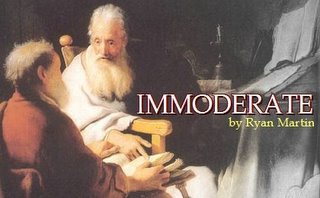Christ lay in death's bondage (BWV 4)

J. S. Bach's "Christ lag in Todesbanden" (BWV 4) is a wonderful cantata.
You can hear a streaming recording of it by P. J. Leusink with the Holland Boys Choir and the Netherlands Bach Collegium here (to be played on Real Player). If you listen to the streaming audio, you can skip back and forth between the "tracks" (this is a really nice feature).
The text for the cantata comes from a hymn written by Martin Luther in 1524. The German is available here. An English translation is available here. You can see Bach's score (though only for piano and voice) here. Of course, all of these things (and more) is available at the very helpful bach-cantatas.com site.
You should listen to this cantata. Bach composed it in his twenties (1707 or 1708). This cantata is different from many of his others, in that it has no recitatives or da-capo arias; Bach simply repeats each verse as Luther wrote it. Bach has structured the cantata symmetrically: Chorale–Duet–Solo–Chorale–Solo–Duet–Chorale. All of the movements are in some way related to the tune (a chant) or chorale to which Luther originally assigned this text.
My Pseudo-Commentary
As you listen to the first chorale (which follows the brief sinfonia), you will notice the sopranos "holding out" the chorale tune above the other parts. Each verse ends with an "hallelujah," and the one at the end is marvellous to hear and tremendously complex.
I think the "hallelujah" at the end of the second verse is interesting in that is more subdued. The dissonance here is more pronounced. I muse that Bach rendered it more somberly because of the text of the second verse.
The thing I would like to highlight about the third verse (the tenor solo) is the sixth line, "Da bleibet nichts denn Tods Gestalt" (Here bideth nought but death's mere form), where Bach stops the music after "nichts" (nought), and draws the worshiper's attention to the remaining line: "but death's mere form." This is not as obvious on the Leusink recording, but it is still noticeable.
In the fourth verse and central (fifth) movement, one can hear the "awesome strife" in the complex contrapuntal setting of the voices. The altos sing the chorale tune amidst the "battle."
The fifth verse is a bass solo and has a memorable spot where the bass drops a diminished twelfth (from "b" down to an "e-sharp"!) on the word "Tode" (death) in the sixth line ("Our faith doth it to death display").
The sixth movement quite joyously celebrates the Paschal feast, and the returning chorale concludes the cantata.
Sources: liner notes for Hanssler's CD Cantatas BWV 4-6, by Andreas Bomba, Simon Crouch; Timothy Dickey, Carol Traupman-Carr, and my imagination.





0 Comments:
Post a Comment
<< Home